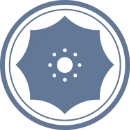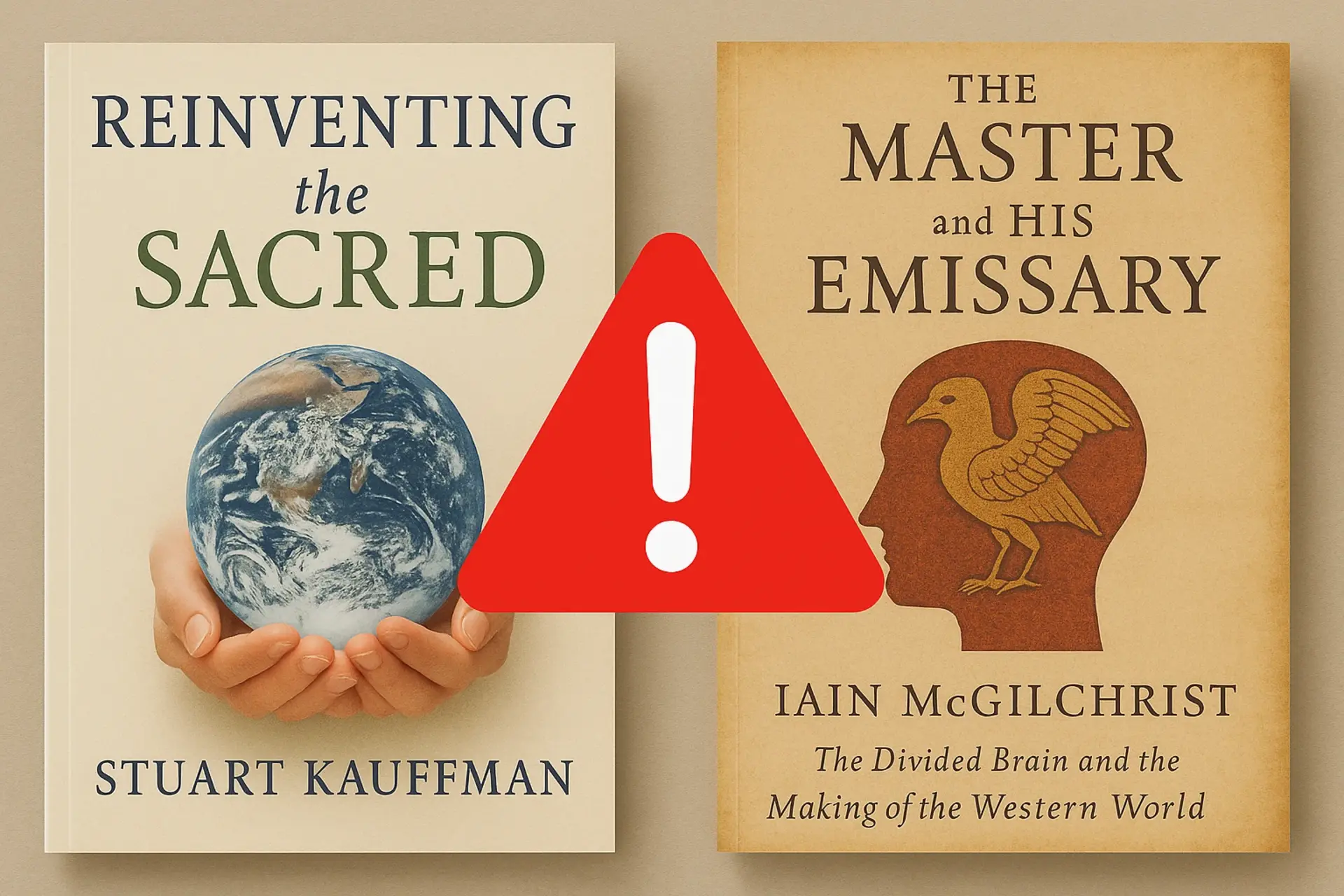These days, you often hear, “This book will change how you see the world.” A colorful cover, words like “new science,” “sacred nature,” “holistic approach.” Inside, promises of grand revelation.
But the truth is, most of these books don’t provide understanding. They provide the feeling of understanding. They lull you to sleep. They create the illusion that you’re “approaching truth” while the world remains the same. They sell promises that can’t be tested, and hopes that are easy to market.
Jacque Fresco put it simply: if an idea can’t be tested, if it doesn’t deliver results, if it can’t be applied to truly improve people’s lives — it’s useless. The scientific method doesn’t need “sacred nature” or meditations on “how complex everything is.” It doesn’t need oracles. It requires honesty and testing.
But if you honestly test ideas, you’ll have to let go of many pretty words sold under the label of “new science.” You’ll have to admit that books like Stuart Kauffman’s Reinventing the Sacred or Iain McGilchrist’s The Master and His Emissary become tools for those who want to talk about the future but don’t want to build it.
This article is about how these pseudo-scientific “deep” books replace real work and the scientific method, and why, if we truly want a better future, we need to learn how to distinguish knowledge from illusion.
Take Reinventing the Sacred by Stuart Kauffman. It’s often praised as a “bridge between science and ethics.” In reality, as philosopher Daniel Dennett sharply noted, all this talk of “the sacred” in nature is “religious rhetoric without substance,” selling ignorance as wisdom.
Kauffman writes:
“We can find a new sense of the sacred, one that is fully natural, and that empowers our ethics and politics.”
But a “new sense” without testing facts, models, or reproducible results gives ethics nothing but fog. This is a direct rejection of the scientific method that Fresco used to build The Venus Project, where every idea had to be backed by experiments, calculations, and the ability to truly change the world, not just by pretty words.
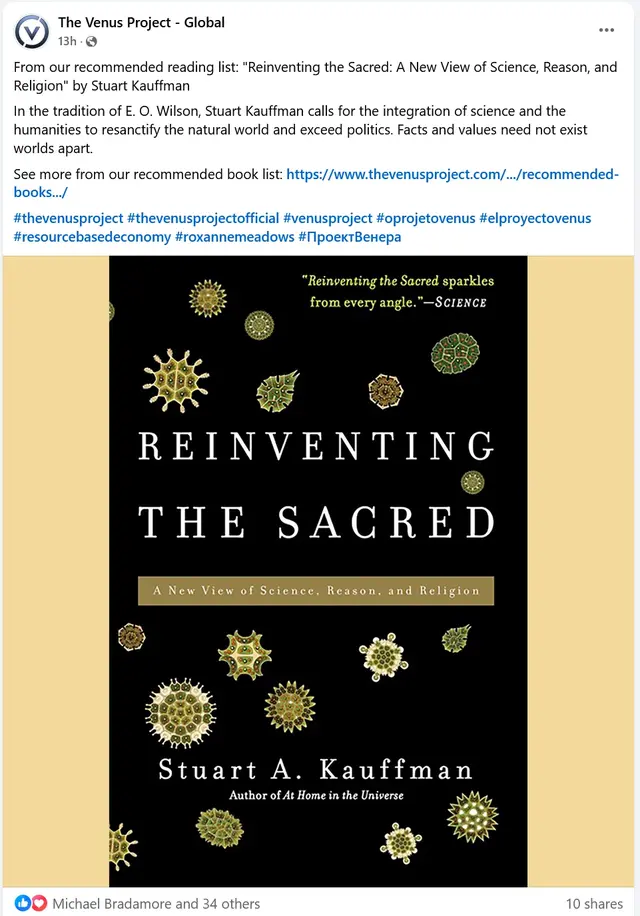
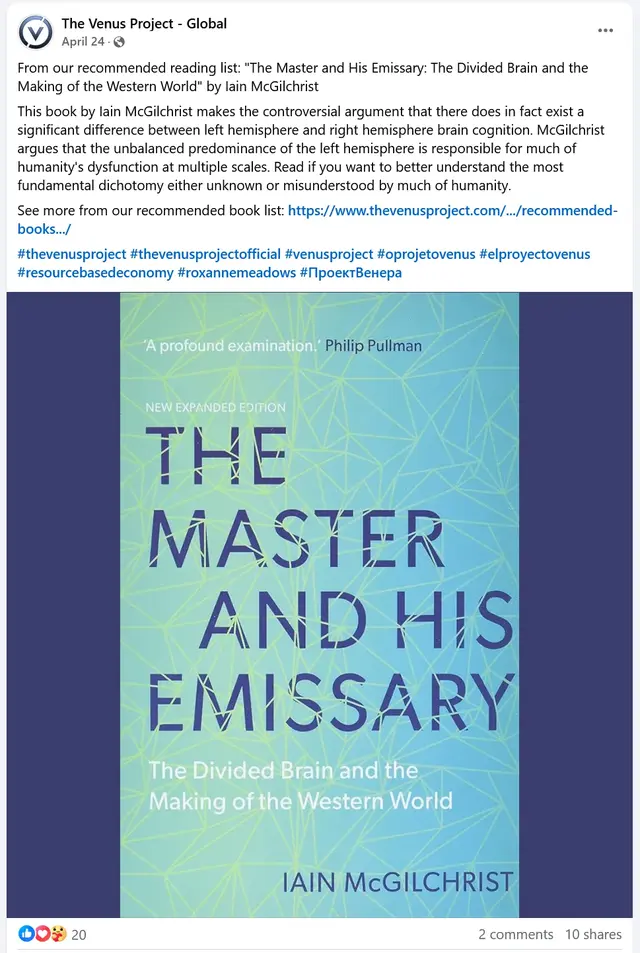
The same applies to The Master and His Emissary by Iain McGilchrist. People quote it when they want to feel chosen, convinced that the “left hemisphere is destroying the world” while the “right” will bring back harmony. But as neuroscientist Kevin Mitchell points out, it’s “a myth packaged as a philosophical poem” that ignores data in favor of a pretty metaphor.
McGilchrist writes:
“The left hemisphere is a wonderful servant, but a terrible master.”
Yes, it sounds like a shaman’s proverb, not a conclusion drawn from experiments. It’s convenient to discuss over tea, giving the illusion that you “see the world deeper,” but if you ask, “How can this be tested?” — there will be no answer.
These books give you the feeling of understanding but not actual understanding. They provide a convenient ideology for those who want power without responsibility, giving excuses not to use the scientific method, not to test hypotheses, and not to measure results.
Yet Fresco spoke differently. He called for conclusions built on testable data, not feelings, for designing systems capable of eliminating poverty and decay, and for testing each idea in reality. He didn’t create a cult of worshiping nature; he wanted us to understand nature and work with it through science, not through philosophical meditations.
As Carl Sagan wrote, “Extraordinary claims require extraordinary evidence.” But these books offer no evidence, only smooth words designed to lull rather than awaken.
That’s exactly why such books replace real literature on systems theory, engineering ecology, automation, and practical design for a new society in recommendation lists. Because after reading about “sacred chaos,” you don’t have to build anything, test anything, or answer to anyone.
How Books Become Tools for Cults and Kill the Scientific Method
Why are books like Reinventing the Sacred or The Master and His Emissary so easily and openly recommended in circles that call themselves “projects of the future”?
Because they are convenient.
Convenient for creating a group of obedient listeners rather than a community of critical thinkers.
When the foundation shifts from testing hypotheses, gathering data, and experimentation to “new feelings” and the “sacred creativity of nature,” criticism becomes heresy. Any question like, “How can this be tested?” can be brushed off with, “You just don’t understand the depth.” People who believe in these books eventually end up running in circles, discussing mysticism and metaphors, feeling “special” while creating nothing.
This is a classic cult-building scheme:
– There is a text supposedly containing “the truth.”
– There are “guides” who know how to interpret this truth.
– There are ordinary people who “don’t understand” and are therefore “not ready.”
In such an environment, genuine testing and doubt become dangerous because they break the spell. They demand you measure what has been built out of thin air. And it turns out that behind the words “new understanding,” “sacred,” and “nature creates” is nothing but a convenient cover.
As Richard Feynman said, “The first principle is that you must not fool yourself—and you are the easiest person to fool.” These books do exactly that: they let you fool yourself while feeling that you are “following the path of the Universe.”
But the worst part is that they steal energy from real change. People who could be working with data, building resource distribution models, tackling ecological challenges, or designing waste and energy management systems instead end up debating which hemisphere is “better” and how to “surrender to nature.”
This is how the scientific method dies.
This is how critical thinking dies.
This is how “projects of the future” turn into talk clubs.
What can you do to avoid this trap?
- Return to the basics of the scientific method.
Every claim must be tested, every prediction compared with reality, every hypothesis open to falsification. - Filter your reading.
If a book offers “feelings” instead of data, “awareness” instead of experiments, and “sacredness” instead of testing—it’s a clear sign you’re looking at new age, not science. - Remember Jacque Fresco.
He didn’t say “trust nature”; he said, “Study nature, build models, test, adjust, improve.” He had no “sacred” texts; he relied on engineering, systems thinking, and science, without mysticism. - Ask a simple question: “What in this can be tested?”
If the answer is “nothing,” the book might be good for meditation—but not for changing the world.
People who truly want to change the world don’t have time for cults.
They have projects, data, models, experiments, mistakes, and the work of fixing them.
And if there is anything “sacred” in that path, it is not the chaos of nature, but the truth revealed through honest testing and hard work.
If we want a future without poverty and meaningless labor, where we have learned to live with nature and with each other, we need to stop looking for oracles in books and start looking for errors in our models. We need to stop believing that “the universe creates” and start creating ourselves, step by step, testing and improving. It’s boring. It’s hard. But it works.
This is how we distinguish real work from convenient talk.
This is how we distinguish moving toward the future from yet another new age bush cloaked in pretty words.
This is how we stop being a crowd around a shaman and become a community capable of building a different world.
Read more:
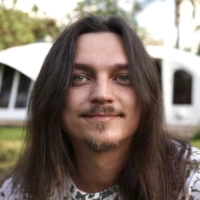
I have been at the center of all this dirrection for over 13 years and can tell you a lot of things, from detailed explanation of Jacque Fresco’s original proposals, to experience of working with the movement, to little known and insider information.
I have organized the most successful and effective team of The Venus Project movement, now represented by Designing The Future, as well as the 1.5 million subscriber Jacque Fresco channel, small and large events, radio and TV interviews, working with universities and schools, organizing events, running a network of groups in 60 cities with regular meetings, and much more. Exposed and fought fraudulent companies and initiatives to protect The Venus Project’s reputation.
Organized and negotiated the construction of The Venus Project’s smart city, with the then living Jacque Fresco, which was their best chance. This has now evolved into a full-fledged smart city project and test site for the development of the entire industry of smart cities, called “Mission on Earth”, which will be launched soon, late 2024-early 2025, and we’re directly involved.
After the new directors of The Venus Project changed course, I strongly opposed it without hesitation, especially knowing the details of the gamble – taking the side of Jacque Fresco’s original ideas. Whatever the outcomes, I will continue what I have started, with the goal of giving humanity a chance to move toward a resource-based economy, or at least to point society in the right direction. I hope you will join us.
